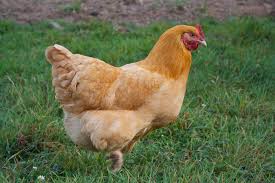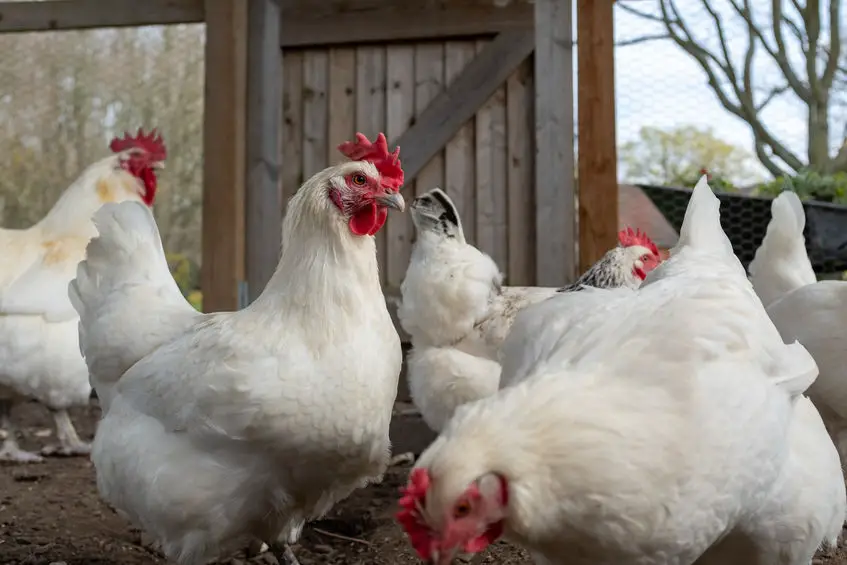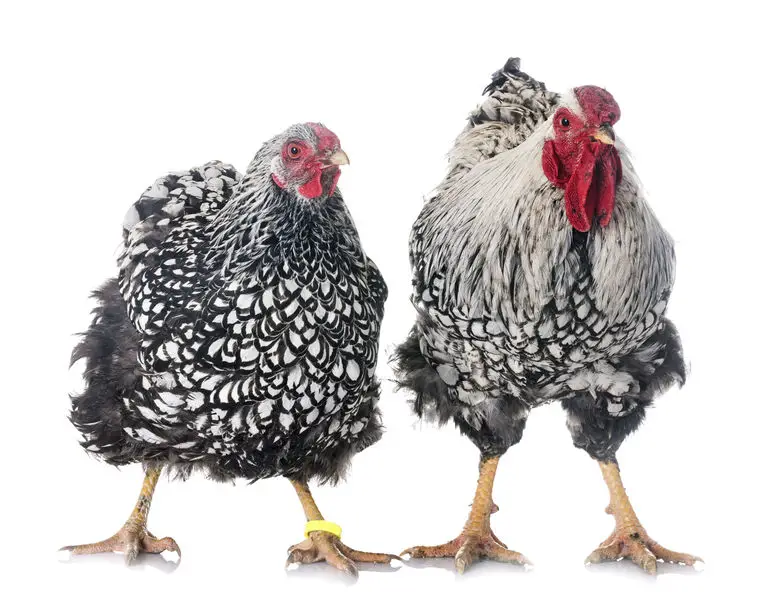Want To Raise Your Own Meat? Discover The Best Meat Chicken Breeds
Want to know if you’re eating healthy chicken meat? Us too. The best way to know what your chicken meat has been fed or how it’s been cared for is to find a chicken farmer in your area you trust, or simply raise your own!
We discuss some of the best meat chicken breeds out there, which include the Cornish Cross and Red Rangers Both of these breeds have been the ‘cream of the crop’ of meat chickens for a long time.
We’ll also discuss a few of the top dual purpose chicken breeds which can be used for both eggs and meat.
There are many variables to consider when choosing the perfect chicken breeds for meat. Maybe a dual purpose chicken will best suit your needs, or maybe you’re just looking for a standard meat chicken. Either way, finding that specific type of chicken can be intimidating if you’ve never raised them before.
We hope this article provides what you need to make the right decision for you! If you’re new to raising meat chickens, see this article.
What to Keep in Mind When Looking for the Best Meat Chicken
When you’re looking for the perfect chicken breed for your situation, keep a couple of things in mind. Pay attention to their weight and processing time. This can help determine how much meat the chicken can deliver in what amount of time.
Many Cornish Cross broilers or Red Ranger breeds will grow quickly and should be processed no later than 6 – 8 weeks of age for the right carcass size and texture of meat. They can be processed at 8 – 10 weeks as well if you want larger roasts. When processed at this later time frame, they are called Roasters. For a list of the different types of chicken meat types i.e. fryers, broilers, roasters, and more, see this article.
If a broiler is processed after this time frame, they can get very large and the meat will be tougher.
For dual purpose chickens, you want to butcher when they are closer to 5 or 6 months old to get a carcass similarly sized to that of the Cornish Cross or Red Ranger.
Ability To Forage
For meat chickens, this is not necessarily a requirement. Cornish Cross and Red Rangers grow quickly and convert feed to meat without it.
However, the benefits of finding a breed that is naturally a good forager or, at a minimum, at least allowed to forage, will do much better. They’ll have a higher quality of life. enjoying their time outside looking for bugs, grass, and seeds. The meat will taste better in the end, and you’ll save up to %30 on feed costs according to some chicken farmers who swear by this practice.
We’ve found some of the most popular meat chickens, and discussed their overall characteristics and qualities. We’ll discuss the most popular meat chickens first, the Cornish Cross and Red Ranger breeds. After that, we’ll take a look at some solid dual purpose breeds.

Cornish Cross Broiler
The Cornish Cross broiler is one of the most popular chicken breeds used for meat. If you buy your meat from a grocery story, for example, more likely than not the chicken you’re eating is a Cornish Cross Broiler.
These chickens are the stereotypical chicken: very large with all white feathers and a red comb. They have strong, thick yellow legs and feet. Known for their muscular, heavy body, these chickens can be very wide and broad.
Out of all chickens, they are probably the fastest growing. At six weeks, males can weigh 6 pounds and females can weigh 5 pounds.
They are not known for egg laying qualities.
Pros:
- Its large size makes it perfect for meat production
- Grows at a rapid pace
- A popular and common breed
- Tender meat quality
- Save on feed costs compared to other breeds due to quicker growth rates.
Cons:
- Can suffer from a weak heart or legs – Because of the rapid growth, this is an unfortunate side effect. However, if the birds are allowed to have some open space to forage, they are less likely to develop leg issues.
- Small egg quantity – this breed is almost exclusively known as a meat breed of chicken.

Red Rangers
These big, red colored chickens are the perfect breed for free-ranging or organic farms. These chickens are bred for meat production. They do not grow as fast as a Cornish Cross Broiler, rather they grow at a more natural speed.
The good news is that they are less likely to suffer from weak legs and hearts, which is commonly associated with fast growing meat birds. It also means there is a longer window for before processing because their health won’t decline as fast.
By 9 to 10 weeks, a male can weigh 5 to 7 pounds, while a female will weigh 5 to 6 pounds. The breast of the Red Rangers is smaller than that of Cornish Cross.
Pros:
- Due to slower growth rate than Cornish Cross, they won’t suffer from a weak heart or legs.
- Processing window – can be butchered at around 10 to 14 weeks. This is not as short a window compared to Cornish Cross but is still significantly less than dual purpose breeds.
- They have the ability to forage, much like dual purpose breeds.
- Contain a higher proportion of dark meat than Cornish Cross – because they are better at foraging means they move more and, thus, more dark meat. They will primarily have white meat but for those liking a mix of white and dark meat, this may be a better choice.
Cons:
- Grows at a slower pace than the Cornish Cross but still faster than dual purpose breeds.
- Smaller breast size than Cornish cross
The next few picks include the best dual purpose chicken breeds. They are primarily used for egg production, but can easily be used for meat as well. Many of these breeds are larger than their other egg laying cousins. They will also take longer to get to a desired processing weight than Cornish Cross or Red Rangers.

Leghorns
This was a favorite of ours growing up. Every year we’d raise and process around 75 leghorns at around 5-6 months of age. They were allowed to forage and had access to a high protein feed from the local feed store.
Because I was young, I don’t recall the carcass size. It wasn’t huge, but WOW were they tasty. Friends that came over still recall how good it tasted. Of course Mom knew how best to prepare it as well! More details on Leghorns can be found here.
Pros
- Good foragers – they eat less feed and gain the benefits of all the organic bugs, grass, and seeds.
- Hardy – can tolerate heat or cold conditions
- Produce lean meat
Cons
- Flighty – they are not the easiest birds to maintain. They aren’t mean. per se, but not overly friendly
- They have a slightly smaller carcass than larger dual purpose breeds because of their medium sized frame. Other dual purpose breeds are structurally larger.

Buff Orpington
The Buff Orpington is a large-bodied chicken that has fluffy feathering and can come in various colors; lavender, black, and blue. This breed was originally bred in the late nineteenth century to be a dual-purpose chicken.
They do well in hot and cold temperatures and have white skin underneath their feathers. Orpingtons can grow to be 8 to 10 pounds but can be processed at about 4-6 pounds at about 18 weeks of age.
If you want the larger sized carcass weight, be prepared to wait 6 months or longer. This is something to consider if you’re not a fan of the slower growth rates. The Buff Orpington chicken breed can lay over 200 eggs per year.
Pros:
- They are good layers
- Come in various colors
- Docile personalities – safe around kids. Having said that, always know there can be variances in personality between roosters and hens, and even between individual chickens within the same breed.
- Good foragers
Cons:
- Will have a slow growth rate compared to standard meat breeds or smaller sized dual purpose breeds.
- Higher feed costs from chick to processing day.

Jersey Giant
The Jersey Giant is – like the name says – a giant. It can grow to be 11 to 13 pounds live. Huge! It will also provide a large carcass. However, don’t get too excited as they will mature more slowly than other breeds. Don’t be intimidated by its large size, this chicken has a docile personality and is good with kids.
They usually have black feathers with yellow skin underneath. In regards to egg-laying, they will lay around 200 (or more) eggs per year.
Pros:
- Grow into an extremely large size (11lb to 13lb)
- Has a good laying rate of over 200 eggs per year
- Reasonably decent foragers. Perhaps not as good as smaller framed breeds, but will do well in a pasture setting.
Cons:
- They will mature more slowly
- Higher feed costs. They can forage, however, which should always be encouraged.

Bresse
This is a high-quality chicken. This chicken was developed in France and is known for it’s amazing tasting chicken. Unfortunately, it is difficult to get a hold of a live Bresse chicken as they are only available in Bresse, France.
However, this breed sure is worth it! Not only is the taste amazing, but they can also produce up to 250 eggs a year, which is incredible. Their growth rate is 10 pasture weeks and 2 weeks of organic feed.
Pros:
- They are known for having amazing tasting meat
- Can produce 250 eggs per year – keep some for eggs and some for exceptional meat.
- Fast rate of growth
- Good foragers
Cons:
- Incredibly hard to find and own if you don’t live in Besse, France. However, there are a few businesses in the US that now carry them.
- Very expensive

Wyandotte
The Wyandotte chicken breed is a popular chicken for many reasons, you can find our article about it here. It’s a large bird that comes in many different colors and patterns. They can weigh up to 8 pounds live.
Their growth rate from chicken to adult processing size is four to five months. They can produce over 200 eggs a year. It’s a good breed to have if you’re new to owning chickens since, like buff orpingtons, they are docile and good around kids.
Pros:
- If butchered at around 5 months, meat quality will be good, and you’ll likely get it done before egg laying starts.
- A common and easy breed to have and keep
- Over 200 eggs per year – keep some for egg laying, others for meat
Cons:
- Takes longer to achieve adequate processing weight than standard meat breeds.
- Increased feed costs
For information on other high quality dual purpose breeds see this article for a detailed list.
Conclusion
In summary, it can be difficult to find the perfect meat breed for you but hopefully this list provides a great starting point. Remember to keep weight, processing time, and possibly egg-laying capabilities in mind when you pick a chicken breed!
As always, every chicken breed is unique. It may take some ‘trial and error’ when choosing the breed that works best for you. If you think about it, nearly ANY chicken breed can be used for meat or eggs, so it’s a matter of choosing which breed has the best overall characteristics for your situation.
Thanks for stopping by and happy “chickening!”







Thank you very much for posting a detailed post about Best Meat Chicken Breeds. Actually, as you said, it is very difficult to find the best meat today. You have shown some good detailed recommendations in this post. Even a beginner can do it very easily. Keep posting like this.
Thank you Pasindu. I’m glad you found the article helpful! I hope you found the right meat breed for your needs.